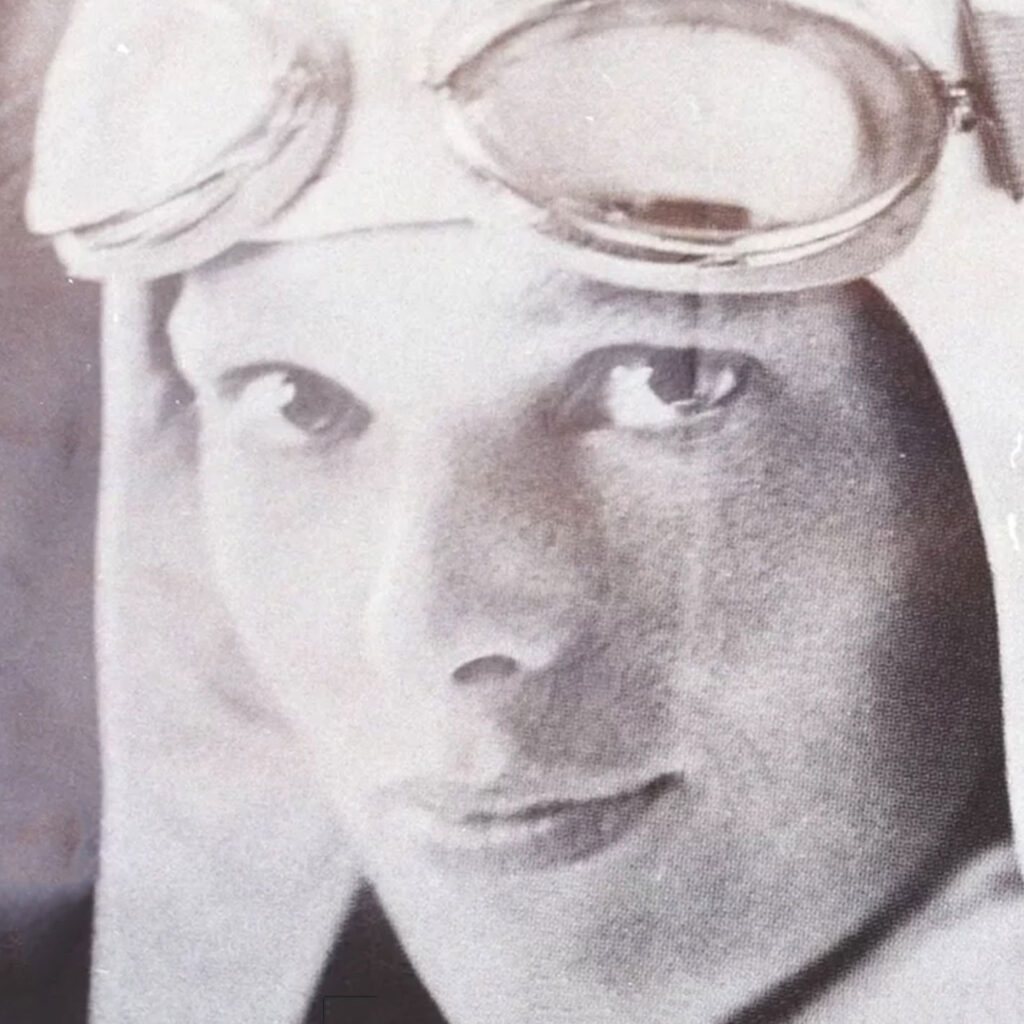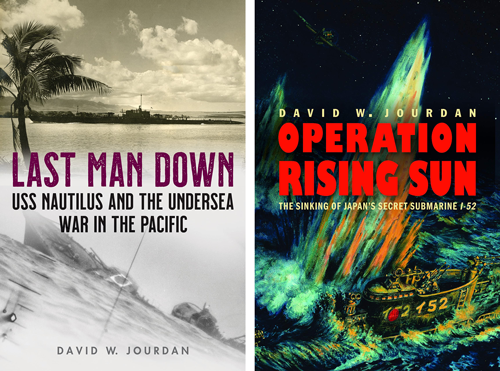 After a thirty-one year search for the missing Israeli submarine INS DAKAR, the U.S. based Nauticos Corporation, under contract to the Israeli Government, located DAKAR in the Mediterranean Sea on May 28, 1999, resting on the ocean floor in two pieces at a depth of 3,000 meters.
After a thirty-one year search for the missing Israeli submarine INS DAKAR, the U.S. based Nauticos Corporation, under contract to the Israeli Government, located DAKAR in the Mediterranean Sea on May 28, 1999, resting on the ocean floor in two pieces at a depth of 3,000 meters.
History of DAKAR
DAKAR was a WWII British “T-class” boat, sailing to Israel after some modifications, upgrades, and complete sea trials. The ship was en route to Haifa via Gibraltar to join the operational fleet. The submarine communicated with the Israeli Navy (IN) headquarters by HF-Morse code every six hours, with one daily position report at 6 a.m. After reporting its position just past Crete, and conducting three ensuing radio checks with no hint of trouble, transmissions from DAKAR ceased. The last verified transmission was on January 25, 1968, just after midnight.
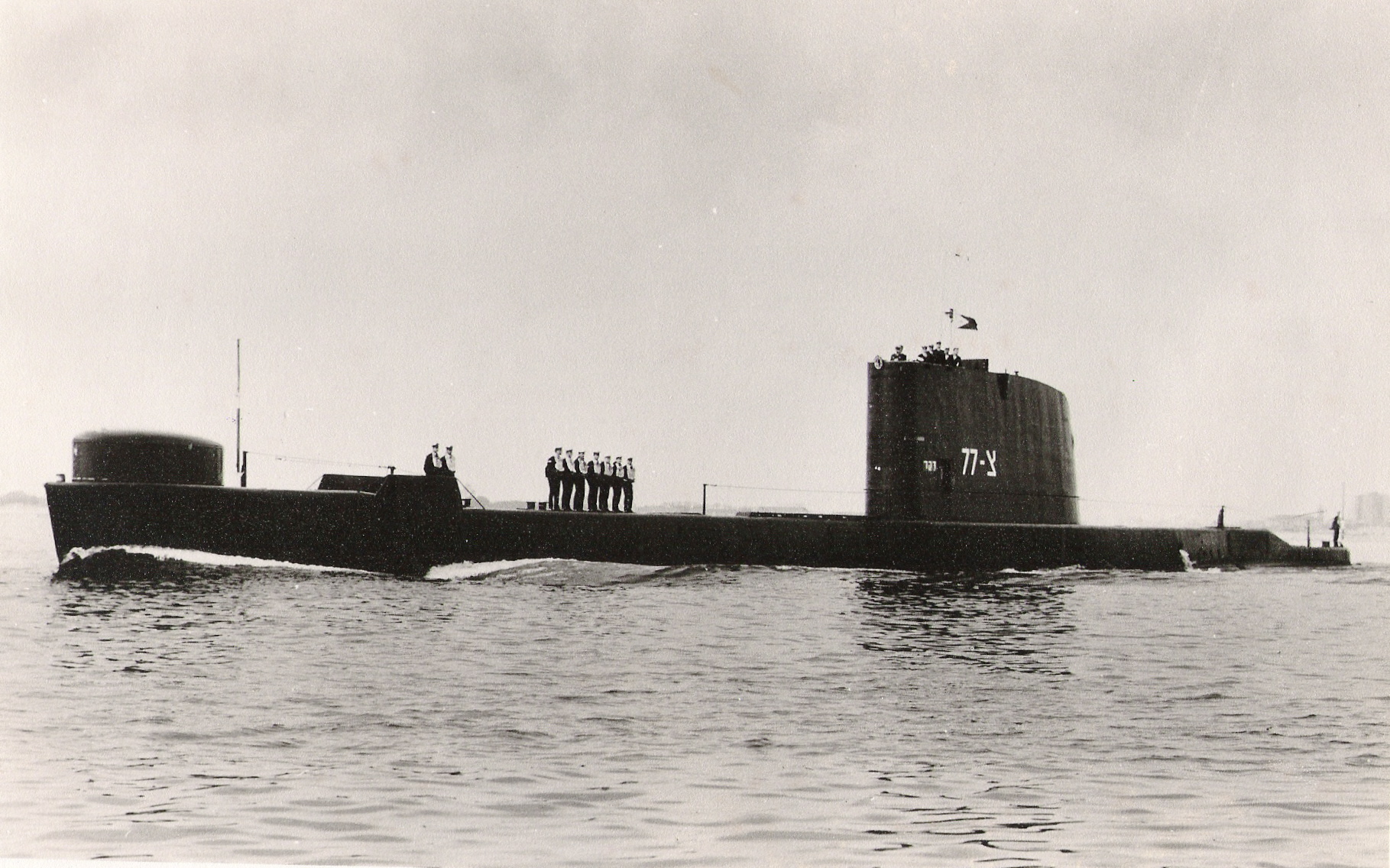
The political backdrop at this time was very dramatic. The Six-Day War had recently ended, and tension between Israel and Egypt was high. The USSR and Egypt had numerous aircraft and submarines patrolling the waters of the eastern Mediterranean. In spite of this, there was no indication of hostile action, and U.S. intelligence did not detect any “acoustic events” at the time of the loss. Newspaper reports claimed that the Egyptians sunk DAKAR, but there has never been any corroborating evidence.
Searches were conducted immediately after loss of transmissions by sea and air, with no results. A rescue buoy from the vessel was found washed up on the shore in Gaza thirteen months after the loss, which only served to heighten the mystery. Sonar searches were conducted in Egypt in the ’80s and the Aegean in the ’90s, based on the evidence of the buoy, which suggested that the ship had sunk in coastal waters.
The Analysis
In 1997, a joint U.S.–Israeli committee was assembled to investigate the loss of DAKAR. The group included Tom Dettweiler and David Jourdan of Nauticos, and Richard (Dick) Boyd (then of the U.S. Naval Intelligence Command), who are experts in intelligence, ocean search operations, search technology, underwater navigation, and submarine operations. The Israeli team, led by Admiral Gideon Raz, provided a broad range of naval experience supplemented by civilian expertise in geophysics, biology, ocean current modeling, and meteorology. Admiral Raz himself was commander of INS LEVIATHAN, the sister ship to DAKAR, and had sailed the same route only a few months before the tragedy. Project Officer Lieutenant Commander Yechiel Ga’ash had been working with the project for eighteen years, and had led or participated in many of the previous searches.
Using a structured analytical approach, the group concluded that DAKAR was most likely to be found lying in deep water along its intended track. Much of the buoy evidence that strongly steered the earlier searches was questioned, and scenarios that supported the deep-water site without contradicting the buoy evidence were presented.
The Search
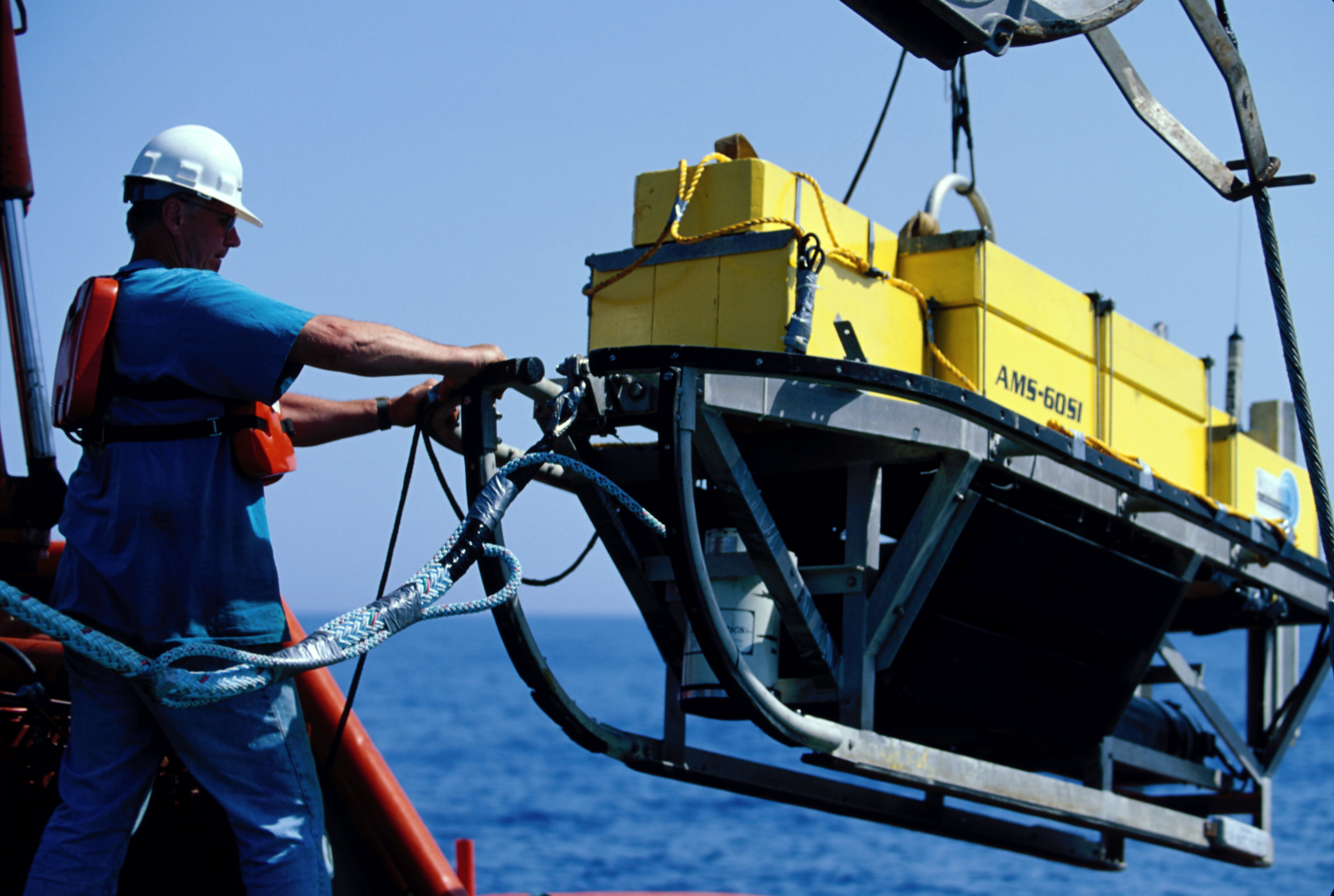
Nauticos committed a combination of advanced, proven equipment and a highly qualified team of search and operations experts to undertake this effort for the Israeli Navy. Tom Dettweiler organized and led the project as Operations Manager, and was assisted in the field by Dick Boyd (by then retired from government service), Bruce Brown, and other Nauticos staff. Lieutenant Commander Ga’ash accompanied the expedition and represented the IN. The search system and personnel were provided by Williamson & Associates of Seattle, Washington. Nauticos and Williamson personnel operated the AMS-60 search system twenty-four hours per day during operations. Navigation technical support was provided by the U.S. Navy’s Deep Submergence Unit. The U.S. Naval Oceanographic Office, the Naval Meteorology and Oceanography Command, and the Oceanographer of the Navy also provided support to Nauticos through a cooperative research agreement.
These systems were mobilized on two ships chartered in Cyprus from EDT Towage & Salvage. There was much work preparing for the cruise, including welding large I-beams to the decks to serve as foundations for the winches, setting up generators, and welding the overboarding gear onto the decks. All this was in addition to setting up the lab space, navigation gear, towfish systems, the underwater vehicles themselves, and numerous other details.
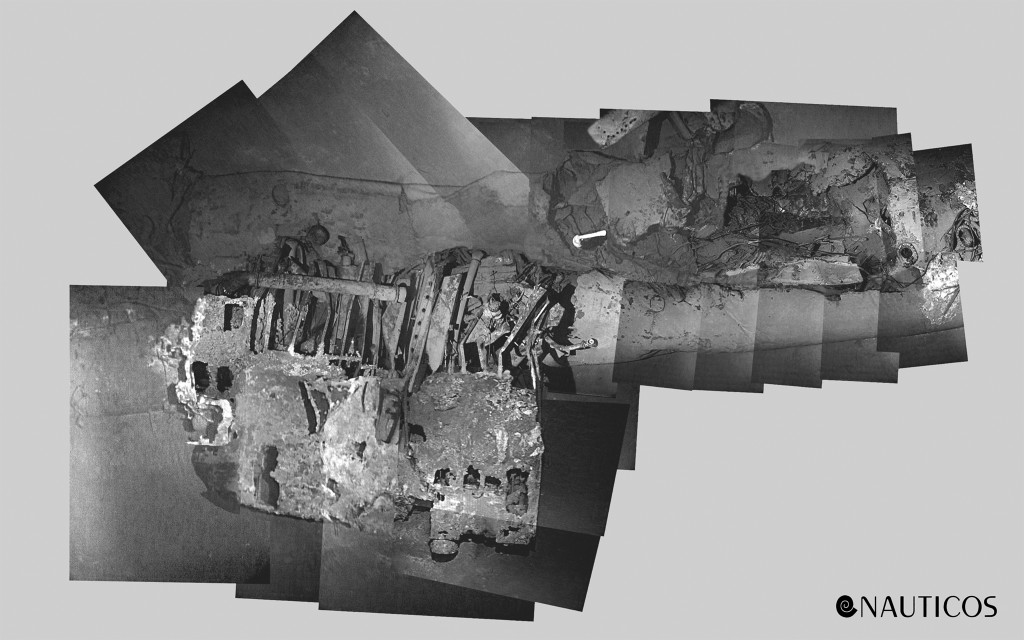
Once the search system provided a good sonar contact, the REMORA 6000, a remotely operated vehicle (ROV) from Phoenix Marine, Inc. of Arlington, Virginia, equipped with both video and still cameras, was used to verify the sonar contacts and identify DAKAR. The sonar contact that turned out to be DAKAR was unremarkable compared to many of the 200 possible targets in the record. Working in tandem, the ROV ship transited to the location of the target handed off by the search team and deployed the robot. As the REMORA moved in, the scanning sonar directed the approach. Before long, there appeared in the video monitors a piece of wreckage, lying at 3,000 meters, later identified as the forward section of the bridge fin of DAKAR. Over the next few hours, the ROV imaged the bridge fin (broken off, and lying on its side), and two major hull sections. The hull was broken aft of the sail, and many identifiable features were seen, including capstans, periscopes, sonar domes, and anchors. The bridge gyro repeater was seen eerily laying face up, showing the last course set by DAKAR as she made her transit across the Mediterranean.
The position of the submarine was nearly in the center of the area originally proposed by Nauticos in 1997. An Israeli team, led by Admiral Raz, was quick to arrive at the scene to positively identify the wreck. Soon, the teams returned to Cyprus, and began demobilization, while Tom Dettweiler, Dick Boyd, and videographer Dave Brown were whisked to Tel Aviv for press conferences, interviews, and meetings with the grateful families of the DAKAR crew.
Bringing DAKAR Home
The following year, in October 2000, Nauticos returned to the site of the DAKAR to achieve three tasks: 1) to discover the cause of the disaster; 2) to recover any remains of the crew, and 3) to recover some artifacts to honor the memory of the crew. The Israeli team included the late Doron Amir, officer on the INS LEVIATHAN, who participated in the original search for DAKAR when it disappeared in 1968. Months before the mission, marine forensics expert Robin Williams joined the team to help identify scenarios and determine the information needed to solve the mystery.
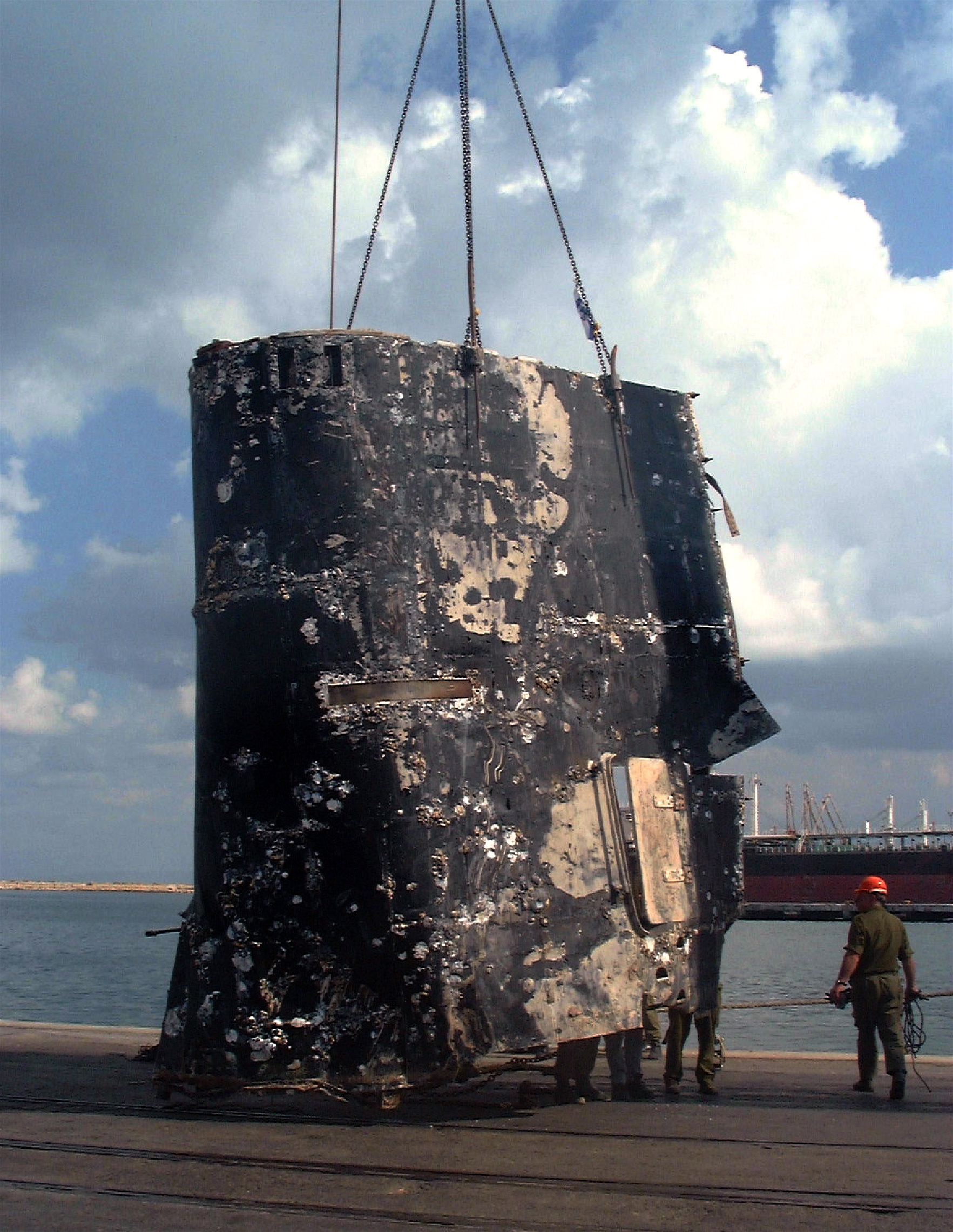
The team first worked to recover a part of the bridge fin of the submarine, a 4-ton piece of wreckage that had detached from the rest of the hull. Using the mechanical arms of the ROV, operators at the surface deftly attached shackles and a lifting line to the frame of the bridge fin. Then, slowly, the piece was lifted from the bottom. Over the next nine hours, the fin section rose two miles to the surface, and was made fast to the research vessel for its journey to Haifa. Finally, after 32 years, a part of the DAKAR made it home. Later, this artifact would become the centerpiece of a new memorial to the crew of the DAKAR, resting at the Haapala Naval Museum in Haifa.
Returning to the site, the team then turned to a detailed visual study of the wreck as part of the forensic investigation. Hundreds of high-resolution photographs were taken of the hull and debris. Because the submarine imploded with great violence within the first 300 meters of its decent, the wreckage was badly damaged and much evidence was confused. However, months of analysis that followed the expedition showed that the DAKAR had been proceeding unhindered on its course to Haifa, and showed no signs of collision or any other external cause. It seems that there was severe flooding in the forward part of the ship, which began just as the submarine began a deep dive. The speed of the dive and the great weight of water in the forward compartments were impossible to overcome, and the ship plunged quickly past its maximum operating depth and imploded. It is estimated that the time from the moment the flooding began until the ship met her end was less than two minutes.
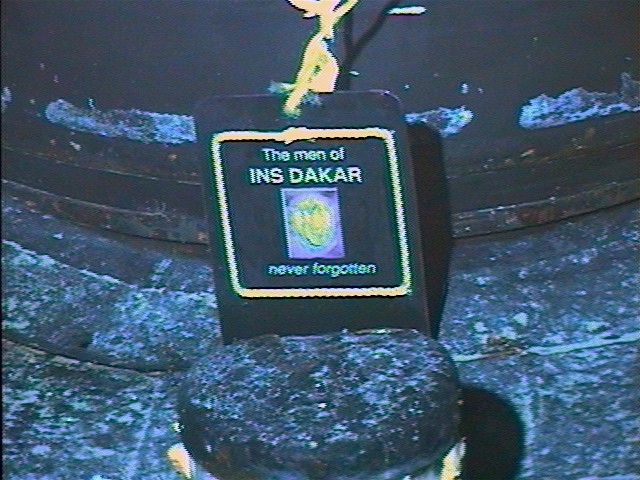
As part of the forensic investigations, the team collected water and soil samples to find any evidence of human remains. The chemical and biological processes of the deep sea normally act to consume organic matter very quickly, and this site was no exception. No remains of the crew could be found. However, several personal artifacts and other items of interest were recovered by the team to add to the collection at the museum.
Finally, the team performed one last task: to place a plaque on the bow of the vessel, with the words, “To the Men of DAKAR … Never Forgotten.” As the ROV backed away, the image of the DAKAR faded into the blue shadows and disappeared, never to be seen again. But we can be sure that the memories of the brave crew of that tragic ship will never fade.
Nauticos president David Jourdan gave his thoughts regarding the discovery of DAKAR: “Our team is proud to work with the Israeli Navy and play a key role in this discovery. I hope that solving this mystery will provide some resolution for the families of the crew of DAKAR.” By far, the greatest reward in completing this mission was the response from relatives of the 69 crew lost aboard DAKAR, 31 years earlier. In a touching letter to the team, they said, “In our tradition, we do not leave our soldiers behind, dead or alive, no matter how long it takes … you brought them home; even deep in the sea, it’s still home to us. Thank you!”
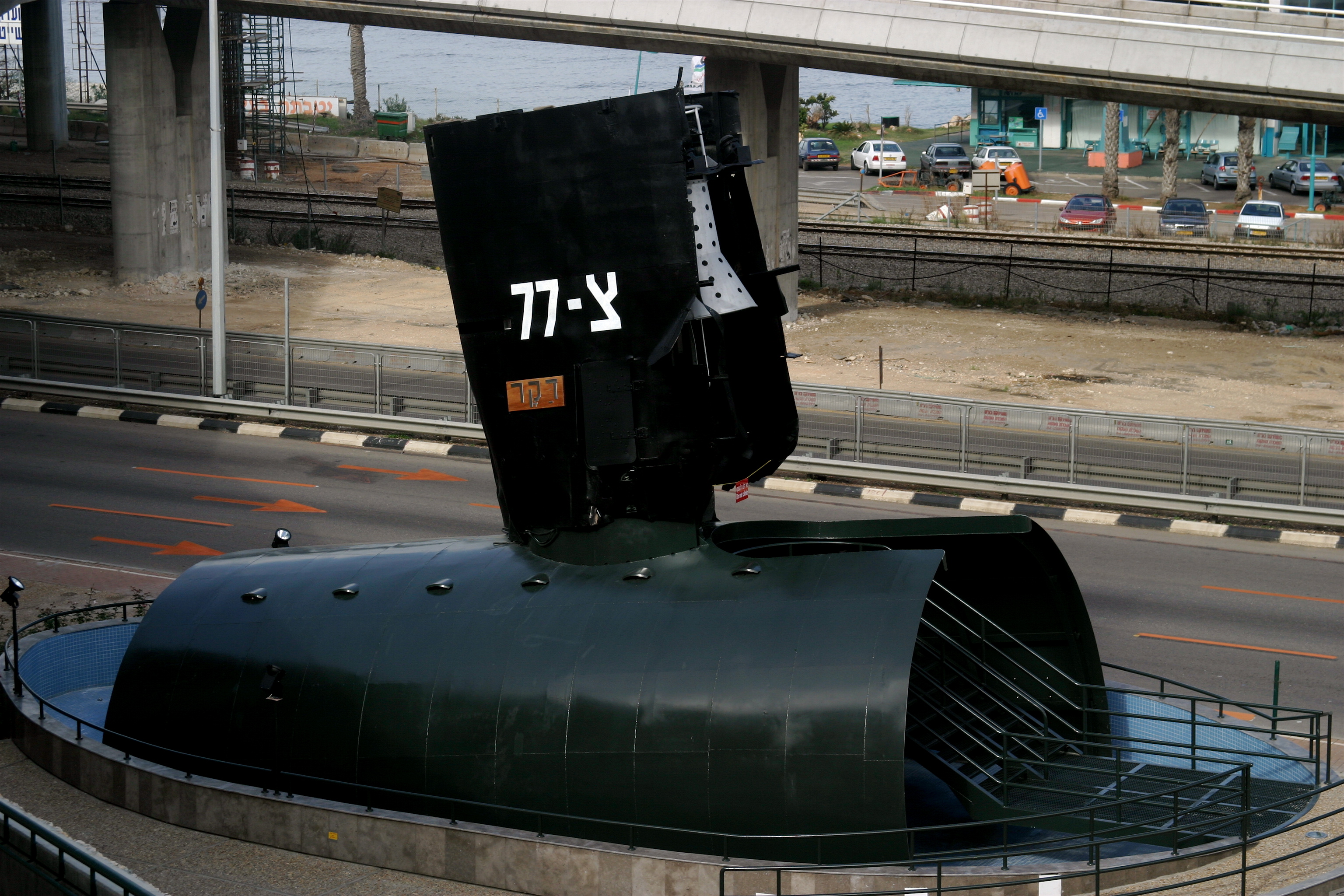
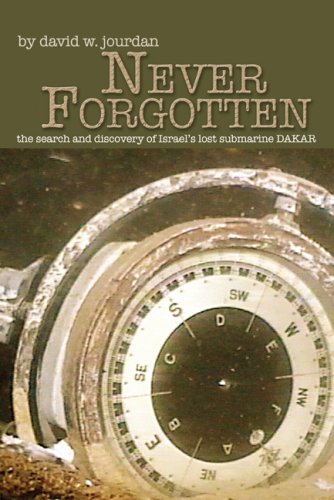
More information about INS DAKAR:


